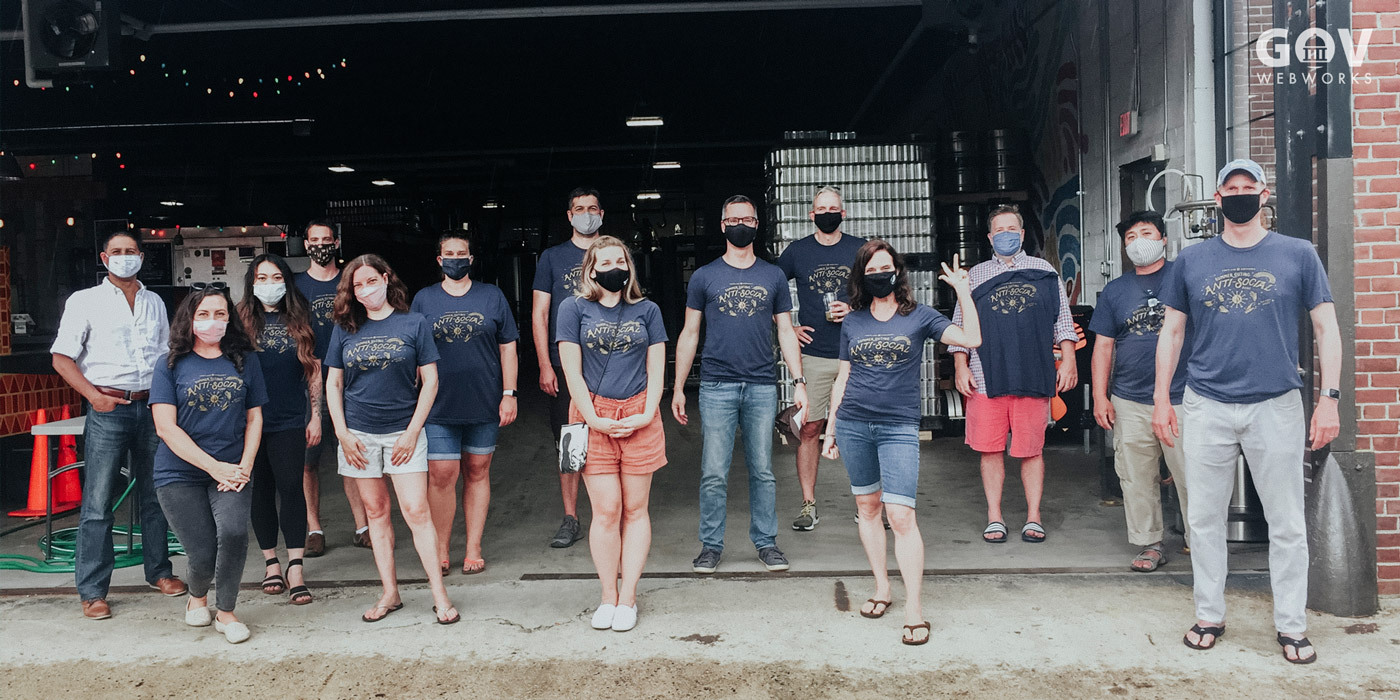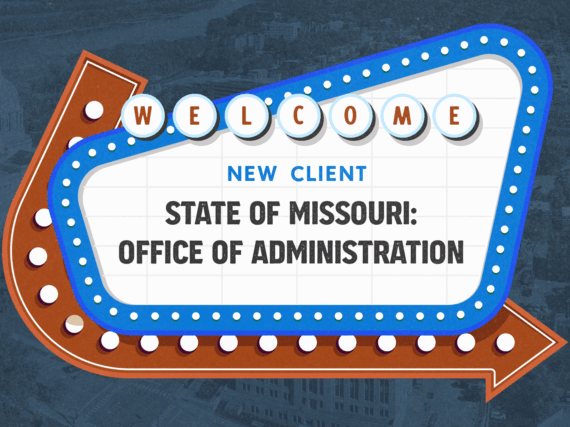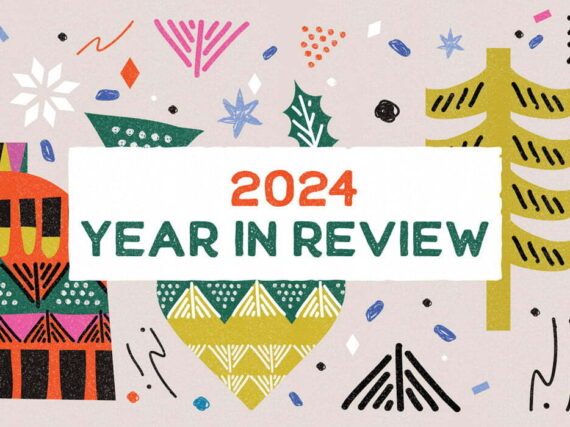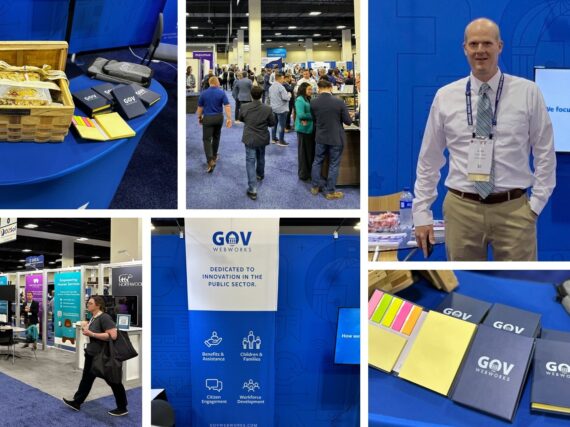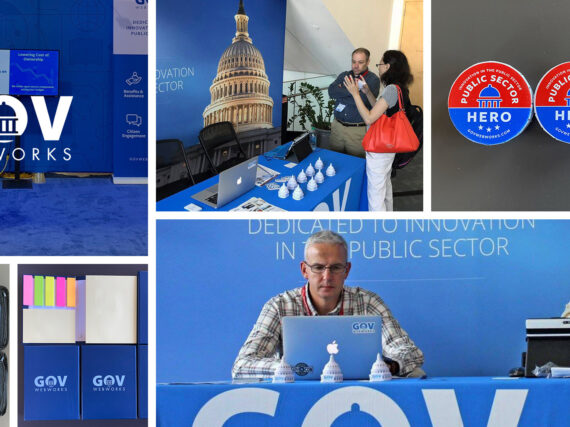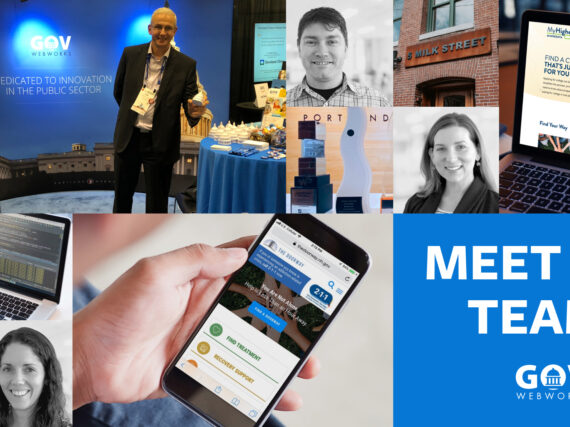The elusive secrets of employee engagement have been a hot topic during the pandemic. To celebrate our fifth consecutive ranking as one of the Best Places to Work in Maine, we’re taking a closer look at what makes a positive workplace at GovWebworks so we can share these insights here and with clients.
Even before the advent of Covid-19, analysts were examining engagement as it relates to job retention during 2019’s tight labor market. Now, the focus is on how higher levels of engagement can help to overcome the stress and uncertainty of remote work during uncertain times, as well as improve productivity and profitability.
What we see at GovWebworks/Portland Webworks is that while we have lost many of our in-office rituals that helped foster a positive workplace, three essential values are still keeping our remote staff engaged.
What are these essential values? Here’s what we learned from the survey.
Survey says
In the Best Places to Work survey, we found the employee comments repeatedly pointed to three specific elements of our culture.
The Best Companies Group, who administers the survey, selected the winning companies based on employee satisfaction with benefits, workplace policies, and company response to changes brought on by the public health crisis. Employees were also invited to comment on certain questions.
When asked “What does this organization do that makes it a place where people would want to work?” three values emerged in a number of the comments. These are:
- Transparency
- Collaboration
- Work-life balance
The following response even notes all of them together:
“It’s a collaborative environment that is very transparent and accommodating. Management tries hard to provide an environment where people can perform at their peak, and offers a good balance between work hard, play hard, with great company perks and flexibility.”
We find we are not alone. In articles such as How to Engage Remote Employees During the Coronavirus Pandemic from the Society for Human Resource Management, transparency (via communicating expectations and recognition for hard work), work-life balance, and collaborative culture are listed as top recommendations for engagement during the pandemic.
So why do these values combine to create happy employees? Let’s take a look.
Transparency
“The financial picture is transparent, as are the requirements for success, so everyone can contribute what is needed to reach goals.”
As a profit sharing company, our financial numbers are available to all employees and spelled out in detail at monthly meetings. We look at the balance sheet with all money coming in and going out. Furthermore, the owner of the company sets clear objectives for financial goals, and puts the keys in everyone’s hands to meet them. All employees are invited step up and share ideas or take charge of initiatives.
Motivators are provided, such as: “If everyone were to work just two more billable hours a week over the course of the year, we would see X amount more in our profit share.” Or: “We only need to get $X in new business in the next three months to meet Y goal for year.”
Furthermore, communication is clear and open between management and employees. If anyone wants to know more about something, all they need to do is ask the person who oversees that topic.
Last but not least, all employees and teams are publicly recognized for successes as major as launching a project, and as basic as consistently logging project hours. While we highlight specific individuals in some cases, such as the annual People’s Choice Awards, most often the team or company is rewarded as a whole. For instance, before Covid, to recognize everyone for logging hours in a timely manner, we would get donuts on Mondays, and a company-wide catered lunch for consistent logging every six weeks. We’ve been so well trained that we now get the logging done without the rewards.
Collaboration
“Employees are engaged, collaborative, and highly communicative with one another, as well as with leadership. It is truly an open-door establishment, without a lot of hierarchy because everyone is treated equally and fairly.”
One of the hallmarks of an Agile/Scrum organization is the emphasis on collaborative, self-organizing teams. On the flip side, collaboration is a delicate skill that can deteriorate under pressure. However, we find that once formed, the habit of collaboration turns out to be surprisingly resilient.
Long before the pandemic, we had already migrated primarily to Zoom, Slack, Jira, and InVision for project team collaboration. While using these mediums alone has some shortcomings, the rituals and meetings associated with Scrum help us to stay the course, as noted in How to Get the Most Out of Scrum Meetings.
For instance, daily standups, backlog grooming, sprint reviews, and retro meetings happen on Zoom just as well as in person. In fact, with many of our remote clients, it’s business as usual, as we were already meeting on Zoom. We also find that simply jumping on a Slack call with a coworker can help to make up for the lack of hallway and water cooler discussions.
Work-life balance
“The best work-life balance that I’ve ever experienced throughout my career.”
Even before we moved to remote work, our company culture supported and encouraged employee flex time for a doctor or hair appointment, or picking up kids when school got out early. Now flex time has an entirely different meaning. Essentially, everyone must determine and manage their time as best they can with kids and other obligations at home. (As one meme put it, it’s no longer “working 9-5” but “working 9-9:10, 9:45-10, 10:20-10:35, 12:30-2, etc.”)
This has been somewhat easier since we already had a foundation of trust that everyone gets their work done as efficiently as possible and logs time accordingly. Working at home with families certainly has its scheduling challenges, but many employees are also finding value in this merging of work and life.
What we miss the most is that before Covid the office was a place most of us liked to be, and we did lots of things together as a company. We had holiday themed bake-offs with prizes for items that got the most votes as they were consumed during the day. There was office yoga, game nights, and an annual summer outing and holiday party. The sole remainder is the regular Friday happy hour at 4pm, now on Zoom, but even that has waned from its initial enthusiastic attendance.
However, “As a small company, most of us have already spent a lot of time together to build strong bonds and camaraderie,” one employee notes. “That residual connection is still there, and helps us to maintain engagement even without the in-office culture.”
Another says, “I look forward to the chances we have to socialize because I really like everyone I work with, but in absence of that now, we are lucky to have built rapport with one another over time across projects. This company, more than any other place I’ve worked, feels like a family.”
Regarding the other challenges of remote work, we’ve been building up our bag of tricks to deal with common issues, with a priority on finding easy ways to substitute in-person interactions. See Work From Home Life Hacks for a collection of remote life strategies from our distributed team members.
Why does it matter?
In the end, happy employees usually lead to happy clients. In Does Employee Happiness Matter?, Ravi Jackson noted, “When a sense of trust is built within a company, both the morale and the quality of the work product increases. As a result, clients receive more value, in less time, with reduced risk of project failure.”
We can attest that employee and client satisfaction are intrinsically interconnected. Recent client comments like the following are our barometer for success, and especially appreciated during such a challenging year.
- “My experience with GWW has been exceptional and I’m very happy with GWW’s professionalism and dedication to completing the project on time, as well as supporting us to make the product better than we had imagined it!”
- “You have an amazing team and we had a great partnership to make this happen.”
- “I have only heard good things from management today. Everyone is impressed with how smoothly the refresh went and how crisp and clean the new design looks. So, on behalf of management – Thank you for all of your hard work and attention to detail. You make this look easy, though I assure everyone it is not.”
In summary
Sometimes we need a dose of Monty Python to put things in perspective:
“All right… all right…” John Cleese says in this clip from Life of Brian. “But apart from better sanitation, the medicine, education, wine, public order, irrigation, roads, a fresh water system, and public health … what have the Romans ever done for us?”
We may have lost a lot of things that we love about our workplace, but we still have the essentials of transparency, collaboration, and work-life balance, as well as solid pay and benefits. And for all these things, we remain grateful.
We’d love to hear what you think. Contact us with your feedback, or to inquire about working with us.
Learn more
- Join our team: Current job openings
- 2 Days Mood: Employee Happiness before and during covid: figures from the (remote) workplace
- Maine Biz: 84 companies named Maine’s ‘best places to work
